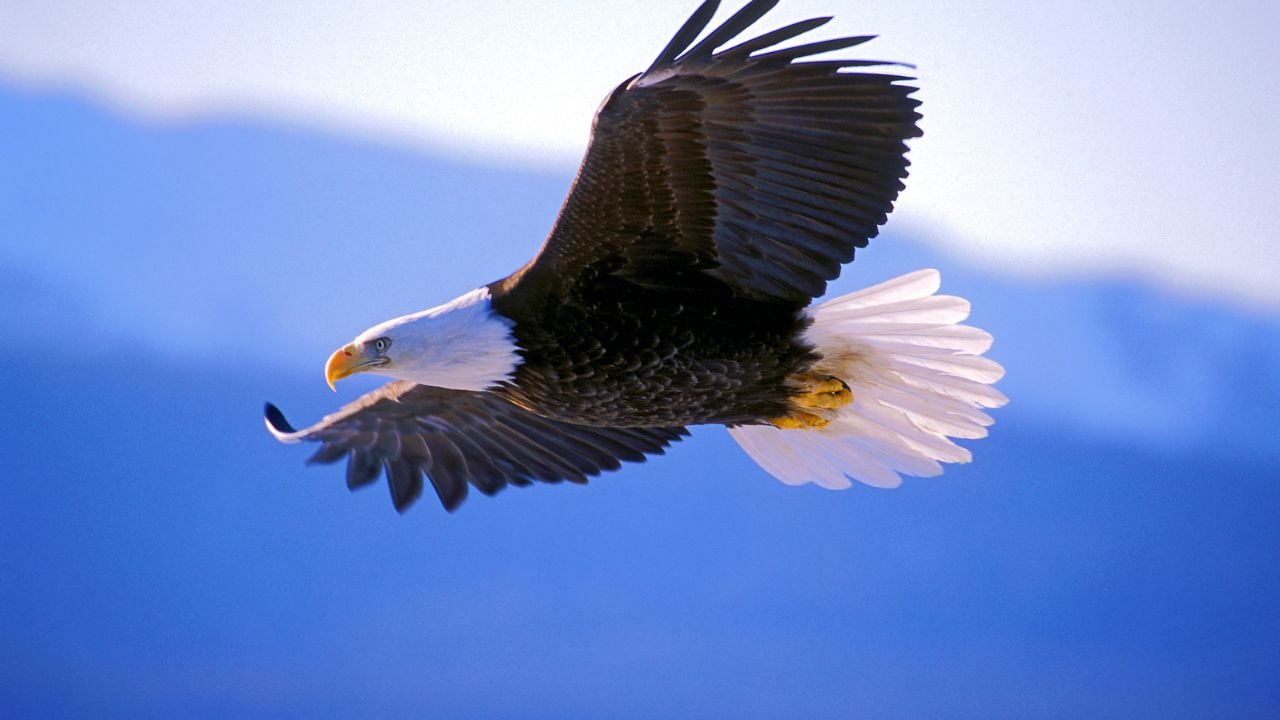It is uncommon for most birds to fly very high in the sky. In fact, some birds don’t fly at all, like the emu and the cassowary. Their wings are considered “vestigial,” meaning they are leftover, non-functional parts from ancestors that once flew. Evolution went even further with New Zealand’s moas, which had no wings at all.
However, there are some bird species that can fly and are known for flying at very high altitudes. While this might seem like a choice, it is actually quite complicated. Flying at high altitudes requires birds to move efficiently and produce energy in a special way.
For example, a study published in the Journal of Experimental Biology explains that high-flying birds have developed unique adaptations such as better breathing techniques, larger lungs, and blood that holds oxygen more effectively. These adaptations help birds take in, carry, and use oxygen better when flying in thin air with low oxygen levels.
Birds that fly at high altitudes also tend to have bigger wings than their relatives who fly lower. This helps them soar higher without using too much energy.
Research has found a few bird species that can fly above 20,000 feet. The most famous high-flyer is the Ruppell’s griffon vulture. Here is more information about this record-breaking bird, often called the “Chuck Yeager” of the bird world.
Ruppell’s Griffon (37,000+ ft.)
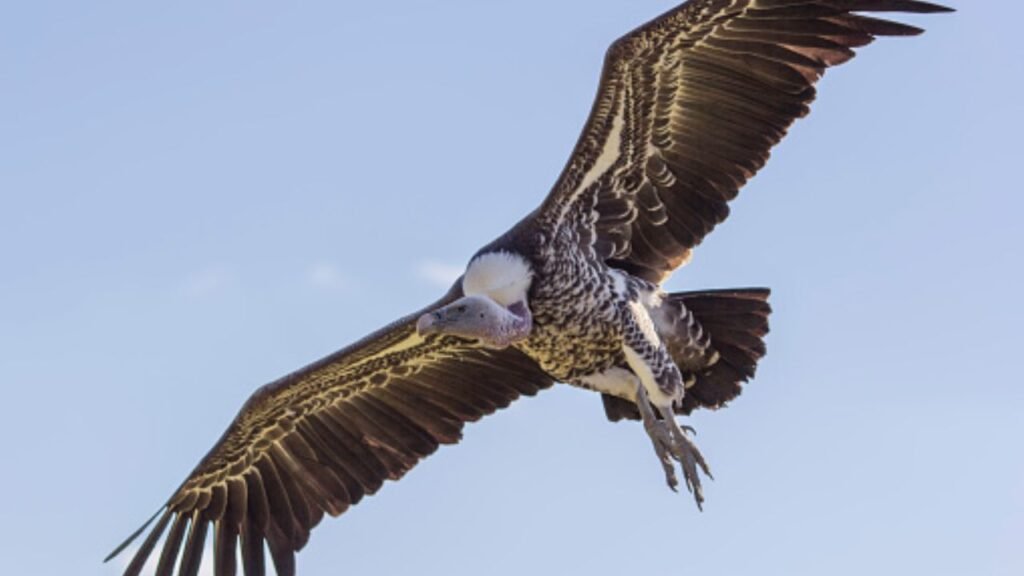
This African vulture holds the record for the highest known bird flight. In fact, a Ruppell’s griffon collided with a commercial aircraft over western Africa at an altitude of 37,000 feet, higher than the cruising height of most airliners. The species is uniquely adapted to extreme altitudes, with hemoglobin that binds oxygen more effectively than that of almost any other bird. These vultures rely on powerful soaring techniques and can cover vast distances in search of carrion, making use of rising thermal currents to stay aloft with minimal energy expenditure.
Bar-Headed Goose (27,000+ ft.)

This bird is known for its grueling migrations over the Himalayas, including Mount Everest. Bar-headed geese have been recorded flying at elevations above 27,000 feet during their seasonal journeys between Central Asia and the Indian subcontinent. To cope with the thin air, they possess a high lung capacity and their muscles are particularly efficient at using oxygen. These physiological traits allow them to flap continuously, rather than just soar, even in oxygen-starved environments.
Alpine Chough (25,000+ ft.)
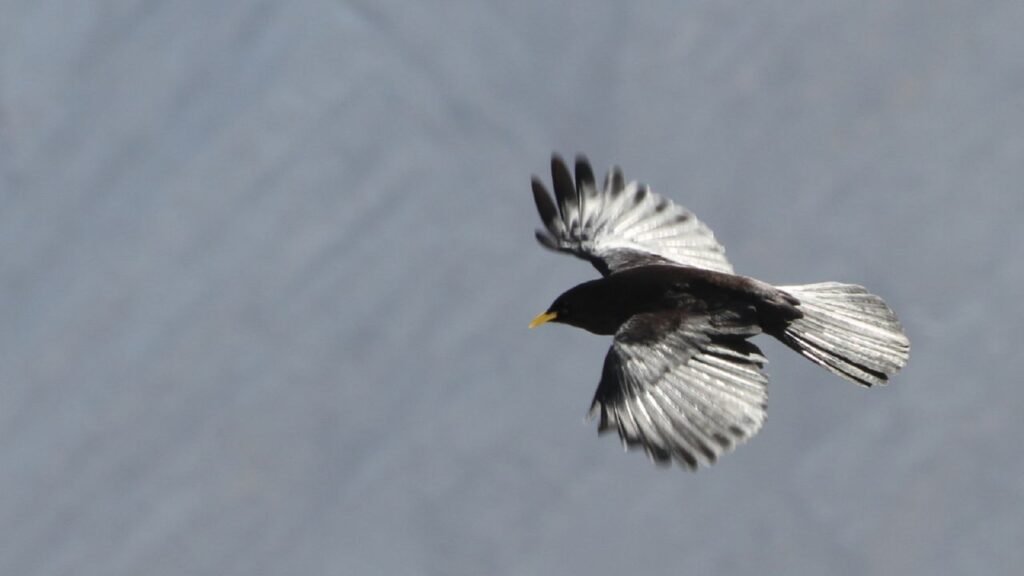
The alpine chough, a member of the crow family, lives in mountainous regions across Europe, North Africa and Asia. Though not migratory in the same way as the bar-headed goose, this species regularly forages and nests at high altitudes. Observations have documented Alpine choughs flying at over 25,000 feet. Their strong, curved wings and acrobatic flight style allow them to navigate rugged terrain with ease, making the most of updrafts and wind currents that sweep over alpine cliffs.
Whooper Swan (25,000+ ft.)
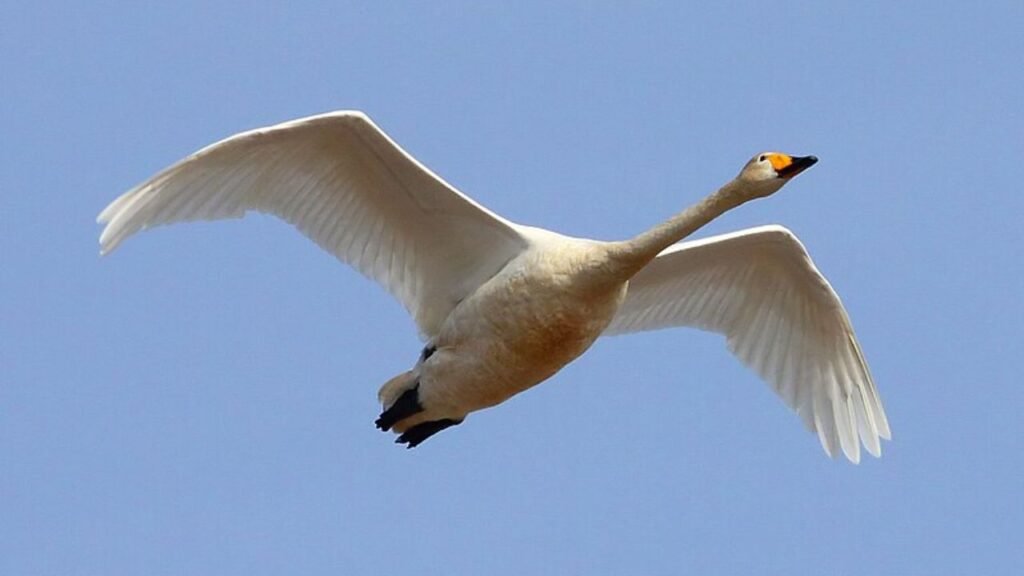
Known for their distinctive trumpet-like calls, whooper swans are powerful, long-distance migrants. These swans have been spotted by pilots at heights of up to 25,000 feet during their transcontinental migrations between Europe and Asia. Despite their large size, their strong wings and streamlined bodies help them maintain high-altitude flight over long distances. They often travel in V-shaped formations that improve aerodynamic efficiency and conserve energy among the flock.
Steppe Eagle (24,000+ ft.)
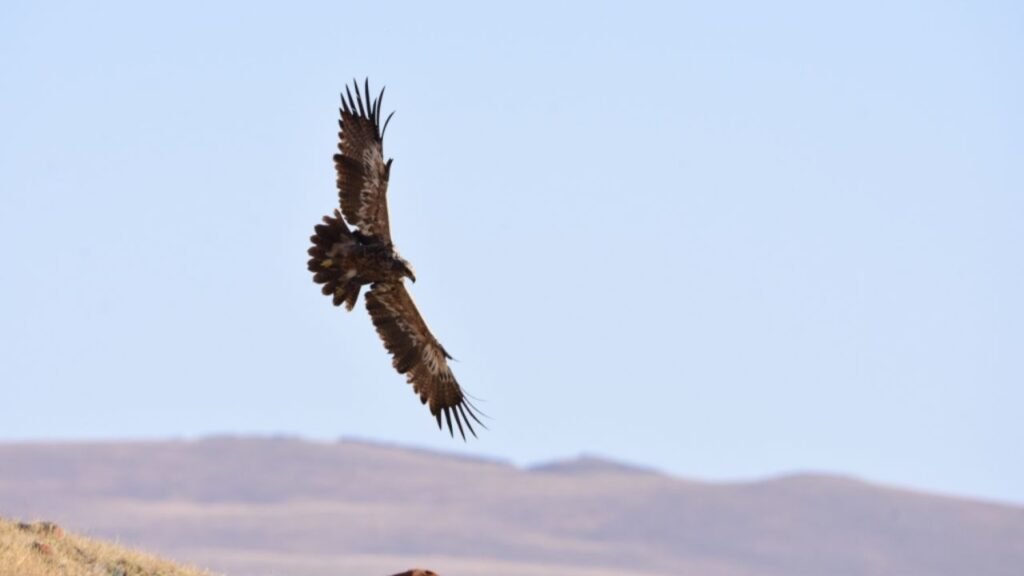
The steppe eagle is a bird of prey that breeds in the open plains and steppes of Central Asia. These eagles are skilled soarers, often riding thermal updrafts to reach extreme heights. Their broad wings and keen eyesight make them efficient hunters and scavengers, capable of spotting prey from great distances. Their long-distance migratory routes take them across mountainous regions where such high-altitude flights are essential.
Lammergeier (24,000+ ft.)
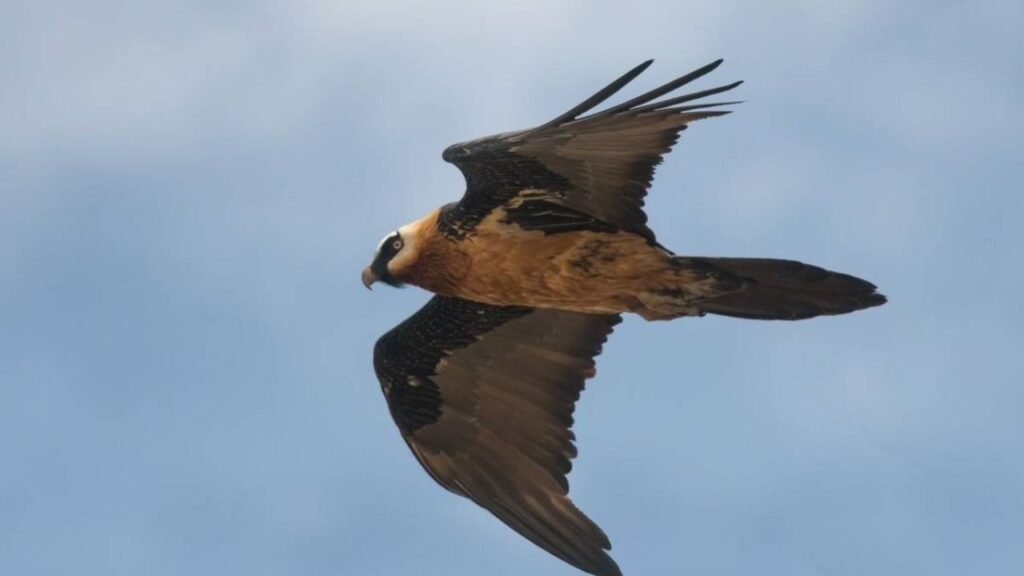
Also known as the bearded vulture, the lammergeier is a striking bird that thrives in mountainous regions from Europe to the Himalayas. It has been recorded flying at heights of up to 24,000 feet, gliding on thermals. Unique among vultures, lammergeiers primarily feed on bone marrow, often dropping large bones from great heights onto rocks to crack them open. Their adaptations for high-altitude flight include long, narrow wings and a lightweight frame, enabling them to maneuver with precision in thin air.
Demoiselle Crane (24,000+ ft.)

Despite their delicate appearance, demoiselle cranes are among the toughest migratory birds in the world. Each year, they make a perilous journey over the Himalayas to reach their wintering grounds in India. Flying at altitudes up to 24,000 feet, they endure fierce winds, cold temperatures and low oxygen levels. These cranes are known for their resilience and strong familial bonds, often migrating in flocks that include young birds guided by their experienced elders.

